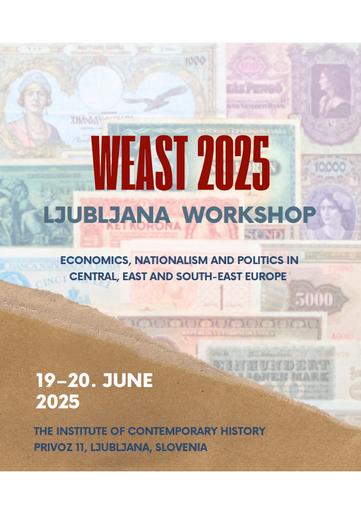/
Dogodki
/
Konference
Bloodlands
The Habsburg military frontier and regional development in Croatia


To delo avtorja Leonard Kukić je ponujeno pod Creative Commons Priznanje avtorstva-Nekomercialno-Deljenje pod enakimi pogoji 4.0 Mednarodna
Datoteke (1)
Opis
Historically, Eastern Europe has been divided by imperial borders. These borders were frequently contested, leading to the creation of military borderlands. One of these was the Military Frontier created by the Habsburg Empire along its border with the Ottomans, where the local population provided military service in exchange for land. This paper examines the historical effects of the Frontier on regional economic development in Croatia. Using a geographic regression discontinuity design, I show that settlements within the former Frontier are today characterised by lower population density, education, employment, proximity to factories, and a higher agricultural employment share. Importantly, these effects can be traced back to Habsburg times, when the Frontier operated. Although not exclusively, a likely mechanism for this persistence is the higher incidence of ethnic conflict during both WWII and the Croatian War of Independence. Besides a new institutional system, the Frontier also introduced new people to the region: the Serbs, who were at the centre of 20th-century conflicts that marked the history of Croatia.
Metapodatki (12)
- identifikatorhttps://hdl.handle.net/11686/71116
- naslov
- Bloodlands
- The Habsburg military frontier and regional development in Croatia
- avtor
- Leonard Kukić
- soavtor
- Stefan Nikolić (mod.)
- predmet
- Hrvaška
- gospodarstvo
- vojska
- meje
- regionalni razvoj
- opis
- Historically, Eastern Europe has been divided by imperial borders. These borders were frequently contested, leading to the creation of military borderlands. One of these was the Military Frontier created by the Habsburg Empire along its border with the Ottomans, where the local population provided military service in exchange for land. This paper examines the historical effects of the Frontier on regional economic development in Croatia. Using a geographic regression discontinuity design, I show that settlements within the former Frontier are today characterised by lower population density, education, employment, proximity to factories, and a higher agricultural employment share. Importantly, these effects can be traced back to Habsburg times, when the Frontier operated. Although not exclusively, a likely mechanism for this persistence is the higher incidence of ethnic conflict during both WWII and the Croatian War of Independence. Besides a new institutional system, the Frontier also introduced new people to the region: the Serbs, who were at the centre of 20th-century conflicts that marked the history of Croatia.
- založnik
- Inštitut za novejšo zgodovino
- datum
- 20. 06. 2025
- tip
- video
- jezik
- Angleščina
- jeDelOd
- pravice
- licenca: ccByNcSa
